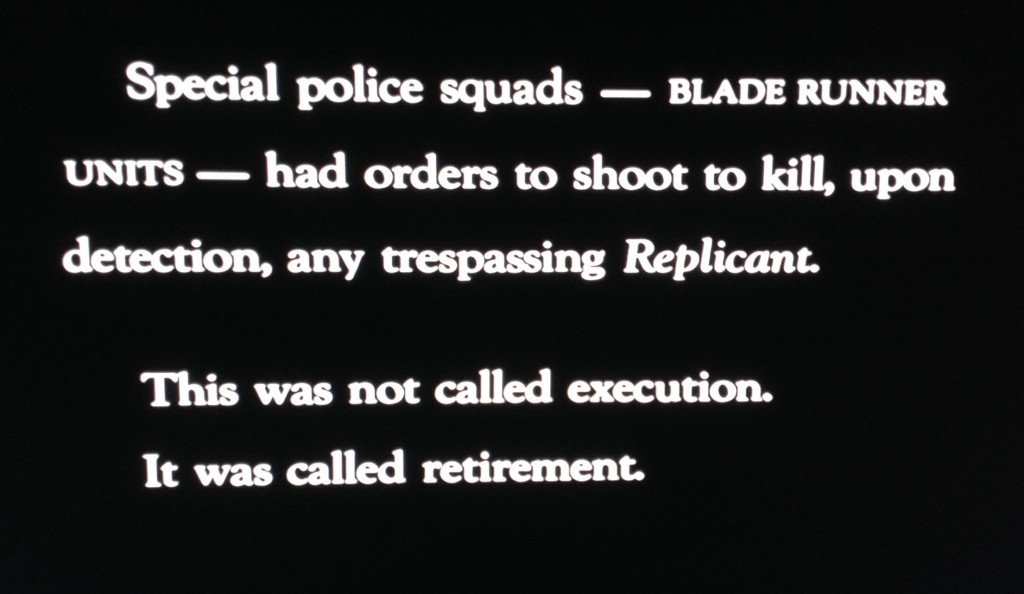 Classification matters — in life as in art.
Classification matters — in life as in art.


A Peer Reviewed Blog
 Classification matters — in life as in art.
Classification matters — in life as in art.

 Several recent and prominent cases of shootings by law enforcement, each happening in different parts of the US, have made the use of deadly force by the police a national issue in a way that it hasn’t been before.
Several recent and prominent cases of shootings by law enforcement, each happening in different parts of the US, have made the use of deadly force by the police a national issue in a way that it hasn’t been before.
One of the things that I find interesting is the way the debate is framed, such as the very category used by media and government (but certainly not by the families and friends of the people who died…) to name these incidents: officially, they’re either called police-involved or officer-involved shootings. Continue reading “Blogger-Involved Commentary”
 As discussions and protests swirl around the United States following the recent Grand Jury decisions in several cases of police violence, Gyanendra Pandey’s discussion of violence, specifically in relation to South Asian nations, is applicable.
As discussions and protests swirl around the United States following the recent Grand Jury decisions in several cases of police violence, Gyanendra Pandey’s discussion of violence, specifically in relation to South Asian nations, is applicable.
There is a violence written into the making and continuation of contemporary political arrangements, and into the production and reproduction of majorities and minorities, which I have called routine violence. The present study is concerned with the routine violence of our history and politics. It is about the enabling conditions of what is commonly seen as violence, but suggests that these conditions – political stipulations, history writing, the construction of majorities and minorities, the education of marginalized and subordinated groups and assemblages – are themselves shot through with violence (Routine Violence: Nations, Fragments, Histories 1).
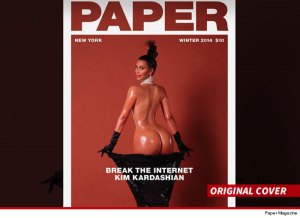 As I’m sure we’ve all heard by now, Kim Kardashian’s backside, displayed for the world’s consumption and viewing pleasure (or not) on the front cover of Paper Magazine, “broke the Internet” just a short while ago and has since caused a flurry of debate, shock, praise, and disbelief. Add to that a big-booty praise of “#allday” from her beloved husband, Kanye West which received thousands of Retweets. I’ll leave it for those entering into the debate with interests and intentions of conflict management and moral maintenance to weigh in on what Kim’s big ‘ole butt plastered on the Internet for the world to view and deconstruct means for progress, freedom, justice, feminism, America, motherhood, identity politics, women, sexuality, Kanye, blackness, and much, much more. Amazing how a bare ass on a magazine can speak to and says something about such a *****wide***** variety of topics!
As I’m sure we’ve all heard by now, Kim Kardashian’s backside, displayed for the world’s consumption and viewing pleasure (or not) on the front cover of Paper Magazine, “broke the Internet” just a short while ago and has since caused a flurry of debate, shock, praise, and disbelief. Add to that a big-booty praise of “#allday” from her beloved husband, Kanye West which received thousands of Retweets. I’ll leave it for those entering into the debate with interests and intentions of conflict management and moral maintenance to weigh in on what Kim’s big ‘ole butt plastered on the Internet for the world to view and deconstruct means for progress, freedom, justice, feminism, America, motherhood, identity politics, women, sexuality, Kanye, blackness, and much, much more. Amazing how a bare ass on a magazine can speak to and says something about such a *****wide***** variety of topics!
Something more interesting — and fascinating (in my opinion) has caught my attention about the unfolding conversation and ensuing public debate and discourse — that has seemingly little to do with the perceived “object” of study here. I’m more curious about how all of these emerging grand claims to truth (seen in what follows below) sparked by Kim K’s naked badonkadonk are helping it to break the Internet and make possible the Sui Generis booty she (and the world) thinks is so NOT-unique, or, not unique enough to warrant all of the hype. One is not born a big booty, rather, one becomes a big booty, so it seems. We have manufactured the Kardashian booty that we so love to hate and hate to love. Continue reading “Manufacturing Booty: On How We Stake Our Claims”
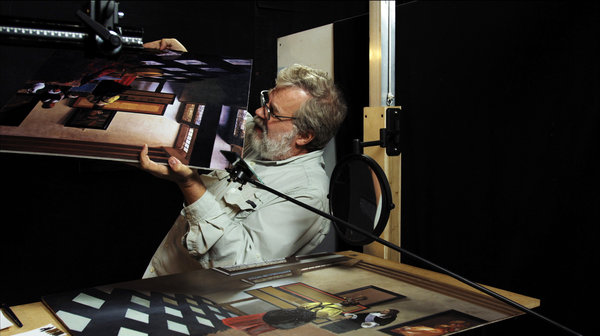
Have you heard of the movie “Tim’s Vermeer” (2013) — it caused a bit of a stir for it suggests that a great artist wasn’t quite the artist we think him to be but, instead, a technologist who might have used lenses and mirrors to produce surprisingly life-like oil paintings. Continue reading ““The problem is that we have that distinction…””
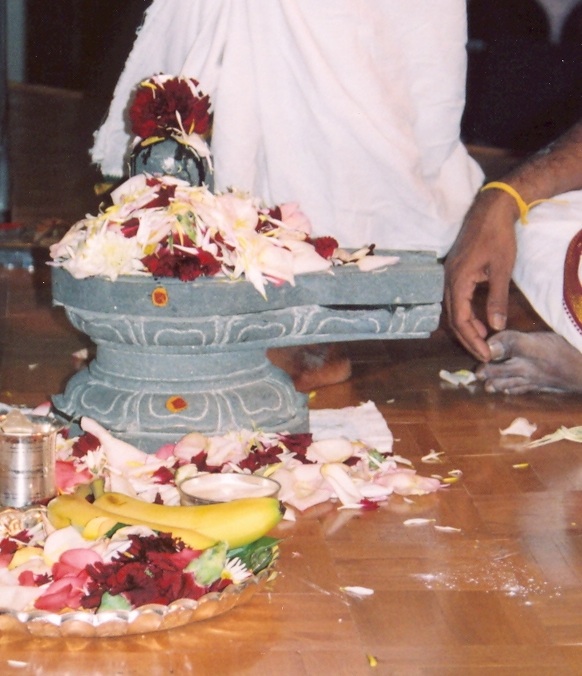
In a recent email discussion among scholars about general issues of representations and Wendy Doniger’s controversial book (about which I have written on Culture on the Edge and Bulletin for the Study of Religion blog), P. Pratap Kumar, a colleague in South Africa, framed the issue through a clear, though contrived, contrast between the scholar and the devotee. He wrote,
Someone who is raised as a Hindu grows up listening to religious songs at Satsangs and even through Bollywood religious songs (there are plenty of Bollywood religious songs that Hindus listen to with utmost devotion) and never would have known that their Hindu texts contain many erotic statements and not just the singular term Linga. But on the other hand, scholars especially from the outside Hindu tradition (be they western or eastern) begin with Sanskrit language and then reading the highly specialised texts where they find statements that devout Hindus would have never heard of. From scholar’s reading, there are indeed very detailed erotic references in many Hindu texts, . . .
We as scholars have to talk about these things because these matters are there in the texts from the Rig Veda to the epics in plenty of places. It is hard to fault a western scholar or any non-Hindu scholar for pointing these out and translating them for what they are.
Following the recent Supreme Court decision on Hobby Lobby, this image — created by a conservative young woman who wanted to signal defiance to American liberals — received a lot of attention:

One response was to point out that this is little different from other forms of “religious fundamentalism.” The story — posted by a friend of mine on Facebook with the comment “Checkmate” — posted a photo comparison with commentary: Continue reading “Can a State Be Fundamentalist?”
Six years ago I took an academic post at a liberal arts college with a heavy teaching load about 4 hours away from Syracuse, New York, where my wife works as a middle school teacher and where we own a home. Consequently, I commute back and forth every week during the fall and spring semesters. Many of my academic friends and colleagues ask me, “Can’t your wife get a job where you work?,” or “You’ve got a good publication record; why don’t you apply for jobs at more research-oriented universities?” Arguably, there are some latent sexist or patriarchal assumptions underlying these questions.
Presumably as someone who identifies as an academic, I have a career — perhaps even a “vocation” — whereas my wife, a public school teacher, has a mere job. Careers have trajectories and involve planning, nurturing, the accumulation of social capital, networking, and so on. A job by contrast could be picked up or discarded for another job which would be its functional equivalent. Why can’t she just swap jobs so I can pursue my career?
 Katie Lofton’s recent review essay of On Teaching Religion in the Journal of the American Academy of Religion has generated significant feedback on social media, both favorable and not. One point of debate is the appropriate classification for the essay. While the journal editor labeled it a Review Essay, others have described it as a tribute to J. Z. Smith’s scholarship, a teaching evaluation, a memoir essay, etc. Other terms describing the essay (a different manner of classification) ranged from narcissistic and Oedipal to a great read. Continue reading “Is It a Review Essay? Strategies of Classification”
Katie Lofton’s recent review essay of On Teaching Religion in the Journal of the American Academy of Religion has generated significant feedback on social media, both favorable and not. One point of debate is the appropriate classification for the essay. While the journal editor labeled it a Review Essay, others have described it as a tribute to J. Z. Smith’s scholarship, a teaching evaluation, a memoir essay, etc. Other terms describing the essay (a different manner of classification) ranged from narcissistic and Oedipal to a great read. Continue reading “Is It a Review Essay? Strategies of Classification”
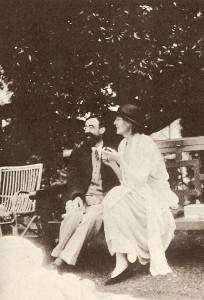 Discussing her observation of a man and a woman getting into a taxi, Virginia Woolf declares in A Room of Her Own,
Discussing her observation of a man and a woman getting into a taxi, Virginia Woolf declares in A Room of Her Own,
The sight was ordinary enough. What was strange was the rhythmical order with which my imagination had invested in it.